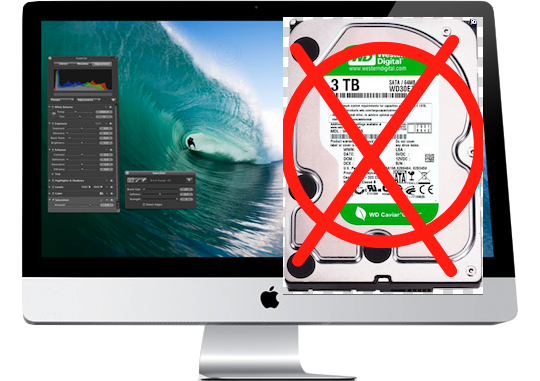
Other World Computing (OWC), supplier of many parts for new and old Macs, has gone in-depth into the reported restriction of Apple’s mid-2011 iMacs. The issue is that if a non-Apple hard drive is placed into the 2011 iMac, the fans will eventually spin at their maximum speed and the iMac will fail the Apple Hardware Test.
Apple is using custom firmware on their supplied hard drives to monitor the thermal properties of the hard drive while it is operating. In order to accomplish this task, Apple must use a special 7-pin SATA cable with the additional two pins being used for thermal monitoring.
What is the problem with failing an Apple Hardware Test? It’s quite simple. Failing an Apple hardware test means that you could be rejected for warranty service on your iMac should there be a hardware issue that is not related to the hard drive.
OWC has outlined some possible workarounds for those who do not care if their warranty is honored or not. The first is to short out the two pins used for thermal monitoring. At this point, your iMac will pass the Apple Hardware Test, but there is a consequence: the fans may not spin at the necessary speed should the drive-bay become heated. This can be fixed by using some software called SMCFanControl that will allow you to tweak the settings at which the fans will spin up to cool off the hard drive.
What does this mean for the majority of users? Nothing. Most users will not want to upgrade their hard drives in their iMacs and will not be affected. However, there is a segment who likes to have their hard drives replaced once their warranty is over. These users will either have to use the work-arounds described above or be forced to purchase an Apple-approved hard drive should they want to upgrade. We all know that Apple has a significant mark-up on their hard drives as well as their other hardware. Therefore, this upgrade path could limit the size of hard drive that is replaced.
We will have to watch and see what will happen regarding 3rd party hard drives installs on the 2011 iMacs.
Article Via Other World Computing blog






